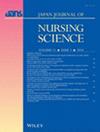Framework to elicit consent from lightly sedated mechanically ventilated intensive care patients in nursing practice
Abstract
Aim
The study aimed to ascertain a framework of nursing practices to elicit consent from lightly sedated ventilated patients.
Methods
Study participants were nurses working in intensive care and critical care wards, whose observations and semi-structured interviews were assessed using a modified grounded theory approach.
Results
A total of 15 concepts were generated, from which three categories and three subcategories were generated. Category 1: Nurses taking the lead in providing assistance by sharing signs of change while continuing the invasive treatment, working to maintain the patient's life, alleviation of pain, promotion of awareness of the current situation, and acclimating them to the treatment environment as the basis for building a relationship between patients and nurses. Category 2: Searching for points of agreement and reaching a compromise involves the nurse drawing out the patient's thoughts, hopes, and expectations, and transforming the relationship into a patient-centered one by sharing goals with the patient in order to achieve them. Category 3: Organizing collaboration within care supported the patient's ability to move safely while maintaining the patient's pace to achieve shared goals, and guided the patient's independent actions.
Conclusions
Even when patients recover from an acute life-threatening situation, their physical sensations remain vague and their functional decline continues. Rather than simply eliciting consent from patients, the structure of nursing practice to elicit such response from patients involves drawing out the patient's thoughts, hopes, and expectations, as well as guiding the patient toward goals that they have created together with the nurse and utilizing the patient's strengths to achieve these goals.

 求助内容:
求助内容: 应助结果提醒方式:
应助结果提醒方式:


